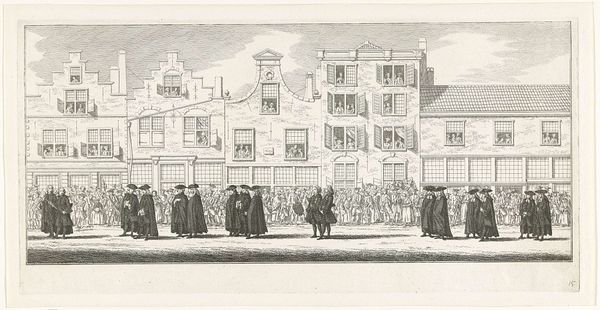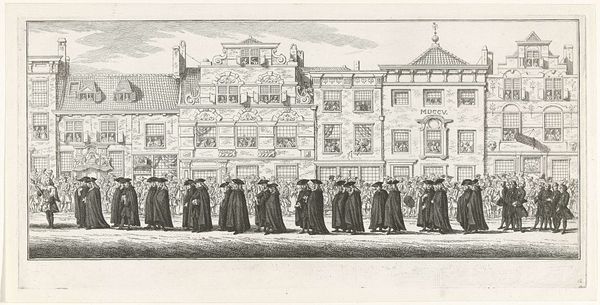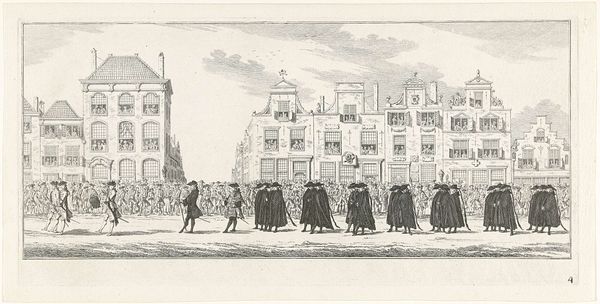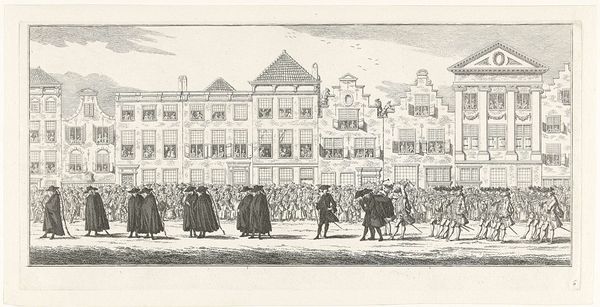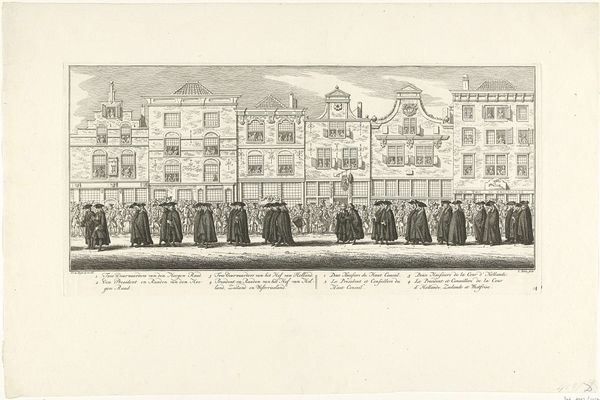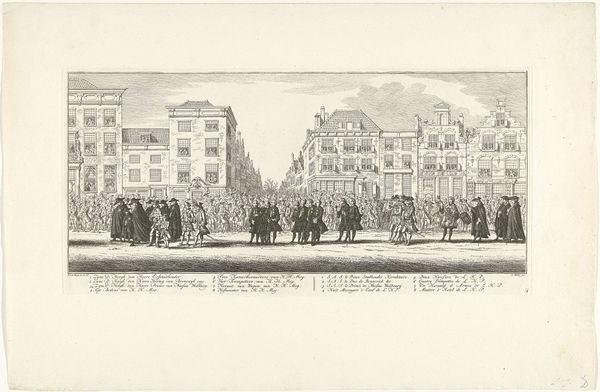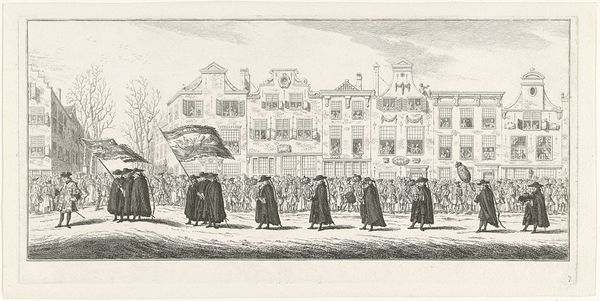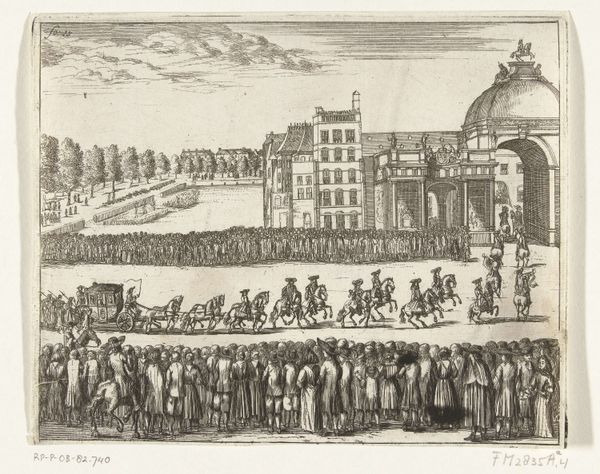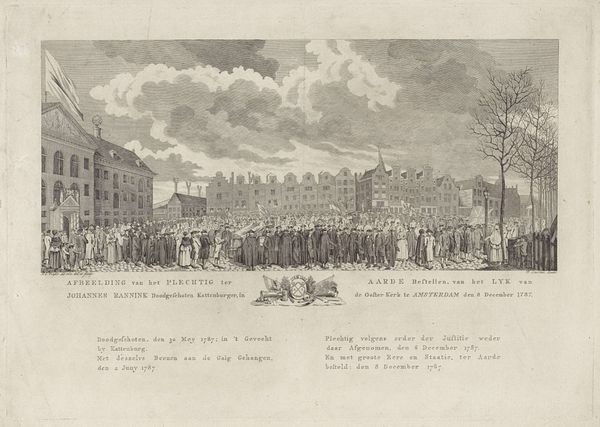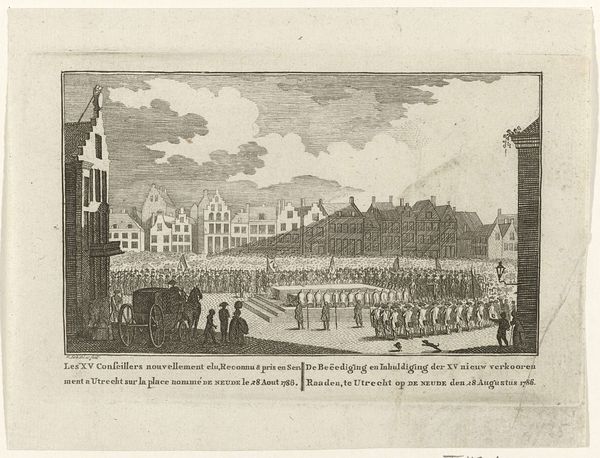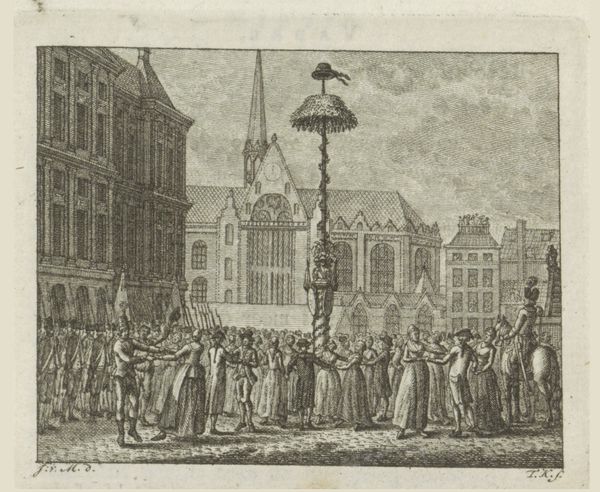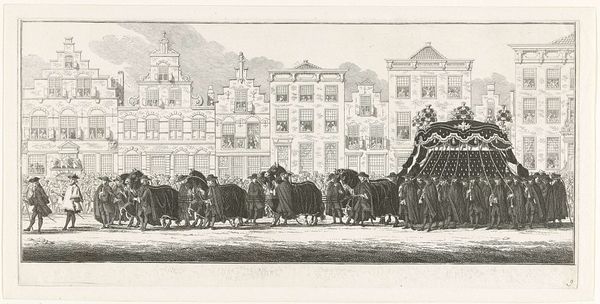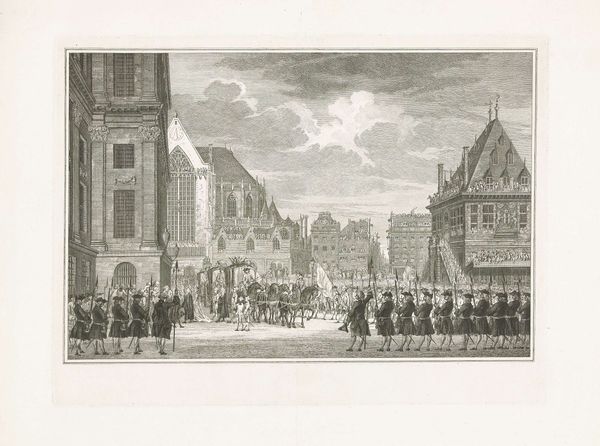
print, etching, engraving
#
narrative-art
#
baroque
#
dutch-golden-age
# print
#
etching
#
old engraving style
#
cityscape
#
history-painting
#
engraving
Dimensions: height 190 mm, width 395 mm
Copyright: Rijks Museum: Open Domain
Curator: Here we have Simon Fokke's etching, "Lijkstatie van prinses Anna, 1759, plaat 11," created in 1759. It resides in the Rijksmuseum, an impressive cityscape depicted with incredible detail in simple lines. Editor: It certainly presents a formal atmosphere. The stark contrast between the black-clad figures and the lighter background creates a somber mood, amplified by the rigid symmetry of the architecture. What do we know about the materials and making? Curator: As an etching, the printmaking process involved using acid to bite lines into a metal plate. Consider the labor: each line meticulously incised, translating a real event into reproducible images, accessible beyond the elite circles. The availability of prints like this reflects evolving consumption patterns, extending viewership. Editor: True, and that repeated mark-making lends itself well to capturing textures. Observe how the facades of the buildings and the crowds are differentiated by tiny alterations of stroke. What does that precision reveal about the historical narrative? Curator: This portrays the funeral procession of Princess Anna, the governor's wife. Notice the various groups identified along the bottom margin; Fokke documents each section of society present—magistrates, officials. He uses linear perspective effectively to draw the eye toward the vanishing point where the implied event is unfolding. Editor: I’d argue that linear precision serves to reinforce hierarchical order. It presents a very controlled spectacle of collective grief. What does the materiality of the print, its portability and replicability, mean in relation to Anna's death, to Fokke's representation of collective feeling? Curator: Consider the wider context of printmaking during the Dutch Golden Age: Prints helped standardize and circulate ideas and political narratives, thus uniting the Provinces beyond visual borders. These images become more than just documentation—they're integral to the cultural and political landscape. Editor: Precisely. It prompts one to meditate on the interplay between image and society, between grief, spectacle, labor, and production. Curator: It's through recognizing that combination of factors that this seemingly simple etching truly comes to life. Editor: Indeed, a compelling convergence of art and historical reflection.
Comments
No comments
Be the first to comment and join the conversation on the ultimate creative platform.
